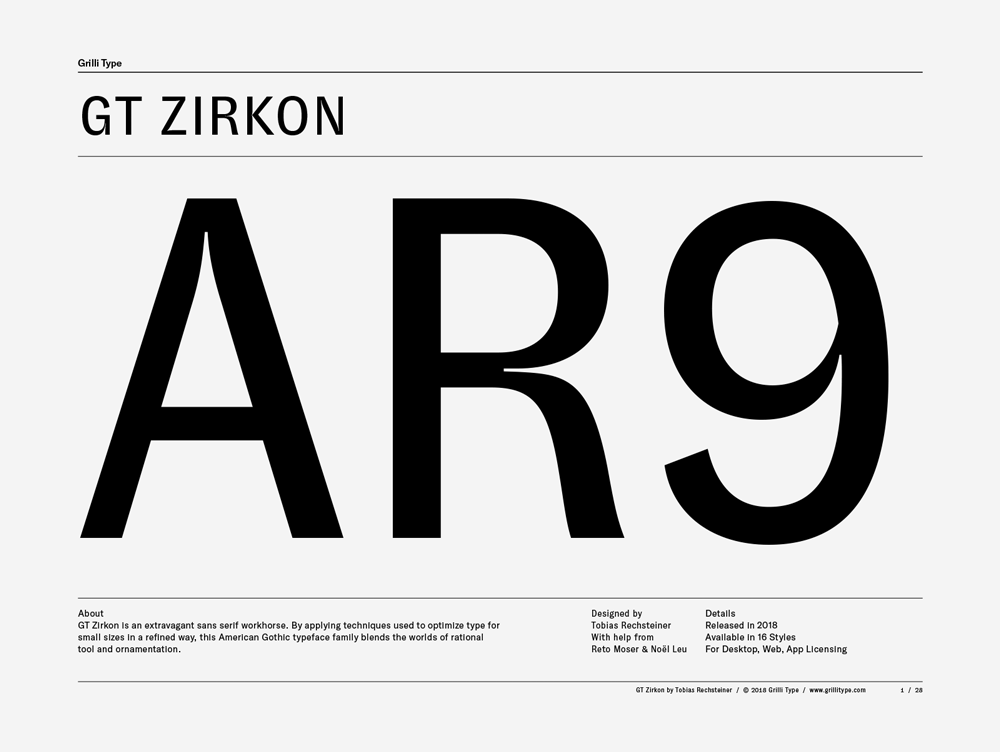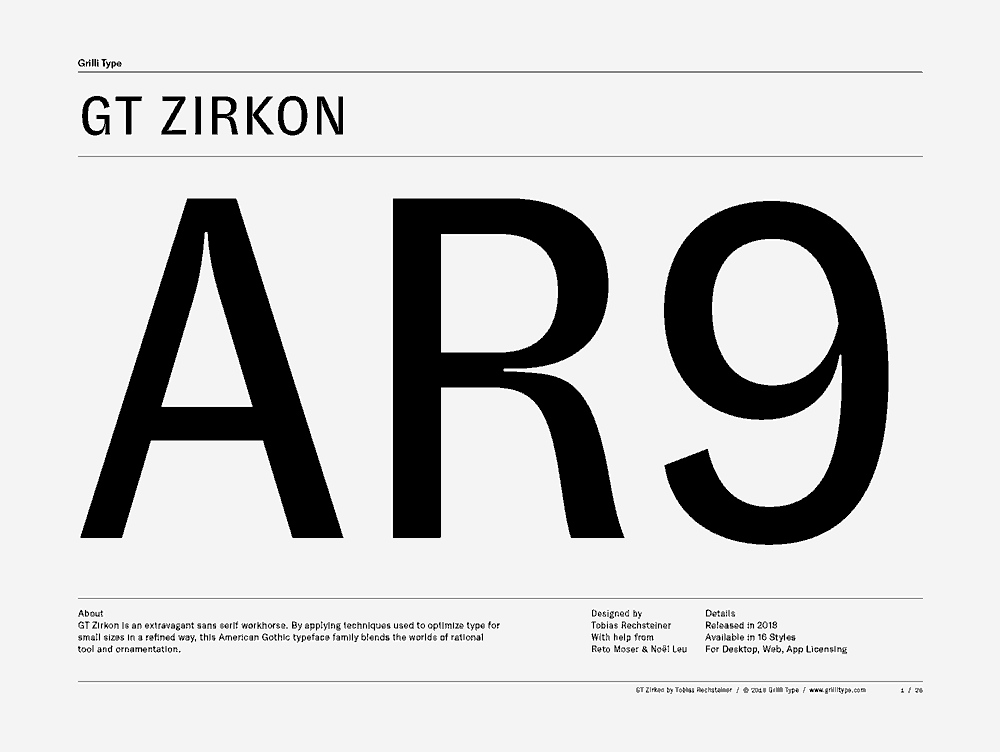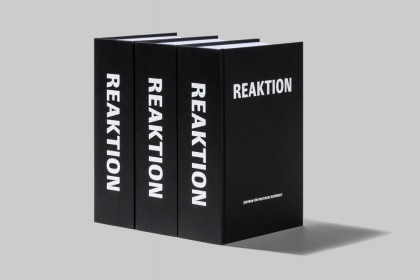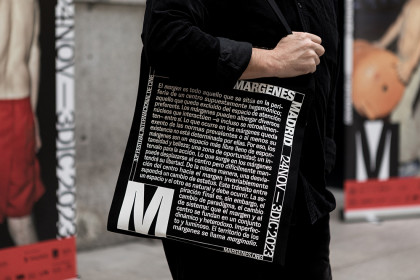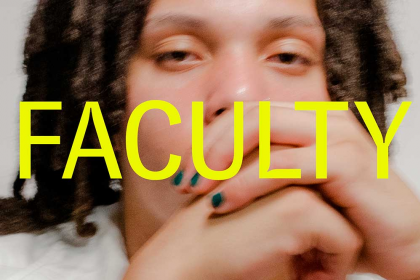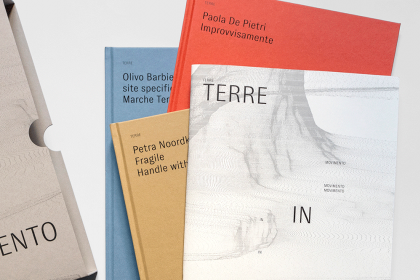GT Zirkon
Family overview
- Ultra Light Italic
- Thin Italic
- Light Italic
- Book Italic
- Regular Italic
- Medium Italic
- Bold Italic
- Black Italic
- Ultra LightThe dark brown to black color observed in most Zircon crystals is caused from iron oxide impurities.
- Ultra Light ItalicZircon often contains traces of radioactive elements in its structure, which causes it to be metamict.
- ThinZircon often contains traces of radioactive elements in its structure, which causes it to be metamict.
- Thin ItalicThe green coloring in many rounded pebbles usually indicates the Zircon is radioactive variety.
- LightYellow, orange and red zircon is also known as “hyacinth”, from the flower hyacinthus, whose name is of Ancient Greek origin.
- Light ItalicZirconium is a mineral belonging to the group of nesosilicates.
- BookZircons from Jack Hills in the Narryer Gneiss Terrane, Yilgarn Craton, Western Australia, have yielded U-Pb ages up to 4.404 billion years
- Book ItalicConnected to internal radiation damage, these processes partially disrupt the crystal structure and partly explain the highly variable properties of zircon.
- RegularZircon is an important gemstone, with several color forms used in various forms of jewelry.
- Regular ItalicIn crystal growth, combinations of light intensity, light color, electric current, sound, the direction of these, plus the shape and size (frequency pattern) of the container or room, will all affect the final characteristics and energy potentials of a desired stone.
- MediumCrystals are almost always terminated with a pyramidal termination, and may be doubly terminated, and occasionally entirely pyramidal resembling an octahedron.
- Medium ItalicAustralia leads the world in zircon mining, producing 37% of the world total and accounting for 40% of world EDR for the mineral.
- BoldZircon is an important gemstone, with several color forms used in various forms of jewelry.
- Bold ItalicZircon is a common accessory to trace mineral constituent of most granite and felsic igneous rocks.
- BlackSome rocks, such as limestone or quartzite, are composed primarily of one mineral—calcite or aragonite in the case of limestone, and quartz in the latter case.
- Black ItalicMinerals are classified by key chemical constituents; the two dominant systems are the Dana classification and the Strunz classification.
- Settings
Typeface information
GT Zirkon is an extravagant sans serif workhorse. It blends the worlds of rational tool and ornamentation by applying techniques used to optimize type for small sizes in a refined way.
Typeface features
OpenType features enable smart typography. You can use these features in most Desktop applications, on the web, and in your mobile apps. Each typeface contains different features. Below are the most important features included in GT Zirkon’s fonts:
- SS01
- Alternate Arrows
Volume ↗
- SS02
- Alternate f
Refraction
- ONUM
- Oldstyle Figures
0123456789
- SMCP
- Small Caps
Ore Deposit
Typeface Minisite
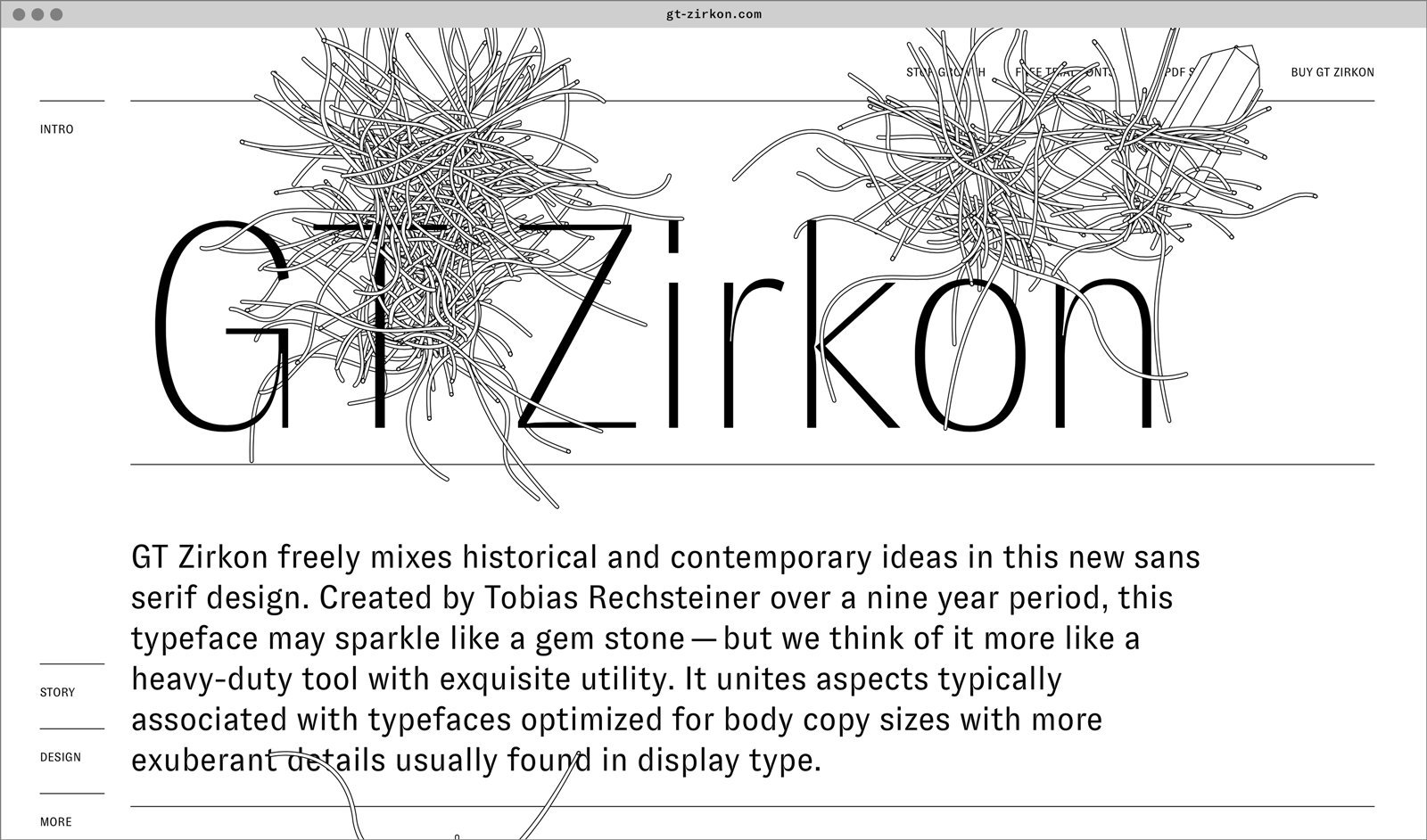
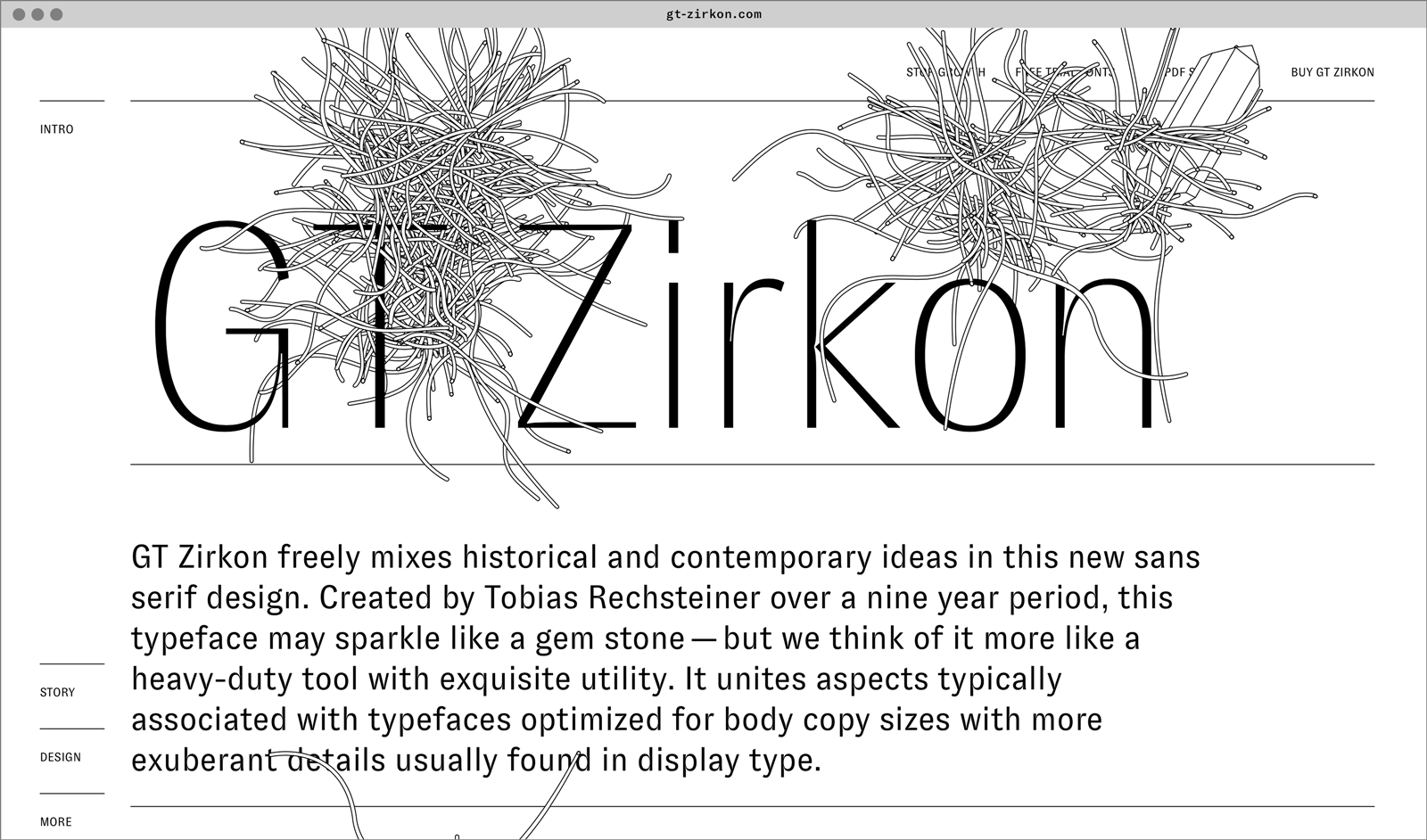
- Visit the GT Zirkon minisite to discover more about the typeface family’s history and design concept.
GT Zirkon in use
